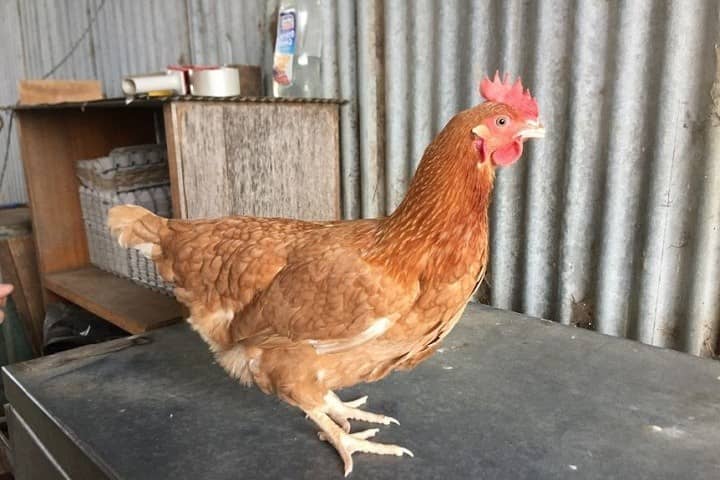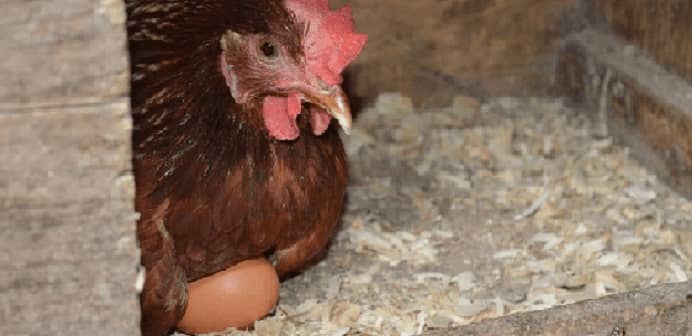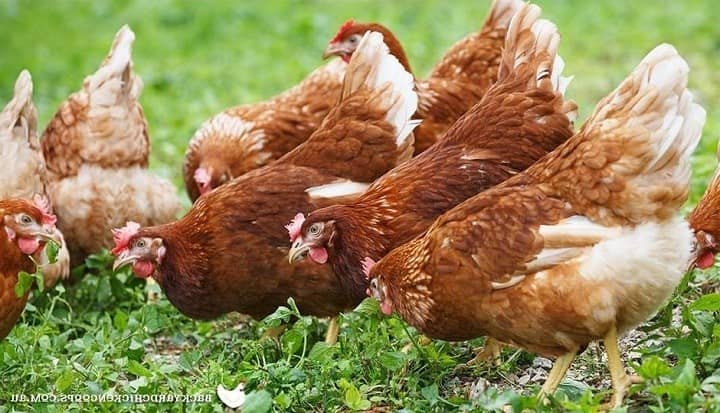Chickens are great investments and pets most people in the world have embarked adding in their backyards at large. But then, before you embark on the real project, you need to have in mind the objective of starting such a project. Chickens offer us great benefits; they are majorly domesticated for eggs and meat for home and commercial use.
In the market, you will come across several chicken breeds at large. As a poultry farmer, you need to get what fits your requirements. If you need chicken for meat, get a breed that will satisfy that particular need. On the other hand, if you need a breed for egg production, get breeds that are best meant to lay eggs. This way, you will reap big from your poultry farming project.
The Isa chicken breed is one of the best considerations for farmers who need to domesticate chicken for eggs. It is the best chicken breed to offer you maximum egg production than any other chicken breed around. Most chicken breeds produce averagely 250 eggs per year. The Isa brown has super passed this; they lay averagely 300 eggs per year. In our discussion today, you will learn about the ISA Brown breed and deduce whether it is a suitable choice for poultry farmers.

The origin
This breed originated in French five decades ago. However, it is not clearly known about their real parents except the original breeder. The ISA Brown is believed to be a crossbreed of between two Rhode Island chickens. Breeding of this chicken was aimed at getting a super layer; a prolific egg-laying hen capable of producing eggs for an extended period.
Their overall appearance
The ISA Brown chickens are adorable and nice-looking breeds around. They look more like their parents, the Rhode Island reds from a distance. However, if you get closer to them, you will notice that its color is lighter.
Other particular specification of the ISA brown
- They are medium-sized; they weigh around 5lb
- The ISA Brown chicken has a rectangular body
- They have wattle and comb
- The ISA Brown combs are single and upright
- They have tails held upright
- Sometimes they grow white feathers on their tails
- The combs and wattles are red
- Their eyes color range from bay red to yellow
Temperament
Most people prefer the ISA Brown chicken because of two reasons; they are excellent layers and their docile and gentle temperament. They fit in all farm environments.
Why most people love domesticating the ISA brown

Apart from being excellent layers, there are other reasons people have identified in these breeds as a perfect option to add in their flocks. Some reasons include;
- The ISA Brown chicken lays large and beautiful brown eggs
- They are quieter compared to other chicken breeds around
- They are one of the popular breeds you can easily find in hatcheries
- Their mellow temperament makes them a preferable option especially to first-time poultry farmers
- They have reduced chance to broody
- You incur relatively low to domesticate them
The ISA chicken breeds are friendly and entertaining at large. This is an advantage to families with children as these hens have excellent hens’ characters. They can be approached by anyone to socialize.
Before you embark on poultry farming, there are several things you will pay attention to. They are essential for sufficient quality production. They include;
- Housing
- Nutritional needs
- Costs
- Cleaning and maintenance
- Health control
- Breeding
All these aspects are essential in raising productive chickens in a backyard. You need to provide your flock maximum comfort for them to remain energetic all times. Always ensure your coop adapts to different climatic changes in your area. This way, the overall egg production pattern for your chicken won’t be affected.
You should also remain attentive when it comes to feeding your ISA browns. Ensure each chicken gets a sufficient amount of food to increase their growth and also maintain their production power. The feeds should be set at specific points to reduce the wastes for feeds. Get everything at its place before you can start the project.
Egg production
These breeds are domesticated to lay eggs. They are super egg layer; they produce an egg almost every day. Averagely they produce six eggs weekly; this translates to about 300 eggs per year.
At what age do they start laying eggs?

The ISA brown starts laying eggs at maturity. They start laying eggs between the 16th and 20th week, and they lay for two years. Their general production rate starts declining after 24 months. At this time, poultry industries prefer to dispense them due to their reduced production rate. However, the production will still be sufficient to small scale farmers.
Housing
Chicken living rooms should be spacious and always maintained clean. The ISA breeds don’t need you to incur expensively to maintain and care for them. They need a deep litter house and spacious to free-range. Chickens also need to stay in cool cages that are sealed from extreme weather conditions. Their cages should also be well ventilated to allow for fresh air circulation. Like other chicken breeds, the ISA brown chickens are prone to predators. You need to construct them a sturdy living space that is sealed to prevent the entry of any predator.
In times of laying, you need to build separate sections and place the nesting boxes for your layer hens. This way, they will have a conducive environment and specific egg-laying points. The surrounding should be warm enough with plenty of lighting at large. Ensure the structure is constructed to allow insufficient sunlight to get into the room. Natural light from the sun makes your chicken energetic to maintain consistent production.
If you need to breed, carry out prior preparations for it. Create separate rooms for hatching or incubating as such. Maintain the site well ventilated to get a high hatch rate.
How many eggs do they lay a day?
The ISA Brown chicken is mostly referred to as a super layer. They have beaten other breeds to produce eggs in abundance. Their eating mode engineers Their high production rate. They eat more food compared to other chicken breeds. The ISA chickens can sometimes lay up to two eggs in a day.
Their nutritional needs
You need to feed your chickens quality feed to increase their production. Quality feeding does not only start during the laying season but from when they hatch and in their entire lifetime.
Chicks should start with starter feeds and ensure to include 20% protein. They should be fed on the starter feeds until they are fully feathers at around when they are two months old. The protein content should stick at 20% until when they will start laying at about 16 weeks.
During the egg-laying season, you will start feeding them with layer feeds. At this time, the protein amount should go down to about 16%. Their feed should be accompanied by clean, freshwater and other nutritious chicken feeds like the insoluble grit and oyster shells in separate feeding points.
Alternatively, the ISA brown breeds are free rangers. They can be left out to wander in search of food. They can feed on worms, vegetables, insects and other pests.
Are the ISA browns aggressive?
These chicken breeds are harsh to other chicken breeds. They usually walk in groups, and they run against other hens, either small or large. They are calm and gentle when they are alone but now when they are mixed with other breeds in a flock. It is good if you separate them from other chicken breeds.
How long do ISA browns live?
Most excellent egg producers’ life expectance is low. The ISA chickens are minor breeds we have around. They are purposely domesticated to produce eggs. Due to this reason, they tend to have a shortened lifespan. Averagely, the ISA browns can live up to three years.
What is their ideal climate?
As a farmer interested to start a project in poultry farming, you need to have an idea of the type of chicken breed that can do well for you. The average maintenance costs of a breed and the climate a particular breed does are the key factors to help you determine the kind of chicken breed to domesticate.
The various chicken breed thrives in different climatic conditions. It is quite rare to get those that can still yield during the cold season at large. However, the ISA chicken has proved to be a unique option to farmers living in different climatic condition environments. They are hardy breeds that do well even in colder conditions.
However, they can still lay eggs during the colder climates; the production rate reduces slightly. Always ensure you maintain them in an enclosed room during the colder seasons and allow little time wandering outside in search of food.
Some tips for raising the ISA browns to increase overall production

1. Ensure you keep their living space always clean
Like humans, chickens also need to stay in a clean environment. Maintaining the coop clean is one of the ways you demonstrate caring for your chicken. Ensure the surrounding environment is clean; all their wastes should be swept off every day. You will require changing their bedding and clearing the litter box regularly. This way, you will prevent bacterial growth that will later cause diseases.
2. They need enough space for foraging.
This is a great way to keep your chickens happy and also boost their overall protein consumption. Allow them to wander to search for foods themselves. Chickens like eating worms, insects and other parasites like aphids and ticks. All these food materials are rich in proteins. You also need to ensure they are left during the sunny days for about eight hours to obtain natural nutrients from the sun to improve their egg production.
3. Provide them quality feeds
ISA chicken needs sufficient quality feeds to enable them to produce quality eggs in abundance. They need more calcium and protein in their diet. Ensure you maintain protein levels at 18%, especially during the laying season. Since commercial feed is low of proteins, you can supplement the feed with food materials like oyster shell and mealworms.
4. Provide them sufficient nesting boxes during the laying season
The ISA browns are excellent layers, and they can lay up to two eggs per day. Considering the number of laying chickens you have, ensure you set plenty of nesting boxes to fit all your laying flock. Provide them with enough space to make them comfortable and cool throughout the laying season.
5. Spare time to socialize with your chickens
Hens are adorable and social pets we have at large. You need to spare sometimes to be around them. You can socialize with them by feeding them while foraging.
ISA browns health issues and care
This type of breed is hardy, and they can do well in all climates at large. However, their laying capability poses them to several health risks. Excellent layers are more susceptible to common chicken reproductive system infections. They are also prone to common health risks like cancer, prolapse and tumors.
There are other common chicken diseases like Marek’s disease and Coccidiosis your chicken might develop. They are deadly diseases that poultry farmers should address before they develop big. Chickens should be vaccinated regularly on chicken-related illness and also provided medical attention immediately they fall sick.
Poultry farmers need to look at the health of their chicken all times keenly. During the peak stages of egg production, the chicken should be fed in feeds rich in proteins and calcium. This way, they will stay healthy to produce quality eggs for consumption and commercial use.
Conclusion
The ISA browns are adorable pets and excellent investment worth domesticating. They lay eggs in abundance for household and commercial use. They do well in all climatic conditions, and they can lay up to 300 eggs per year. The maintenance costs are also relatively low compared to other breeds. They can wander around to feed themselves and thereby to lower costs you would incur to buy commercial feeds.
